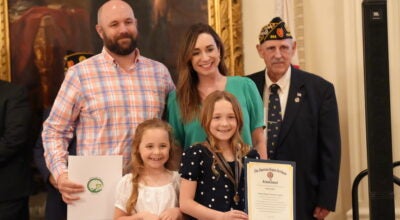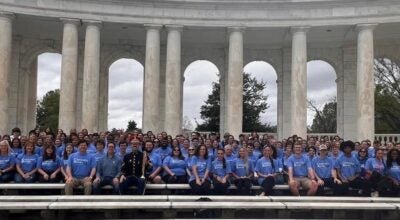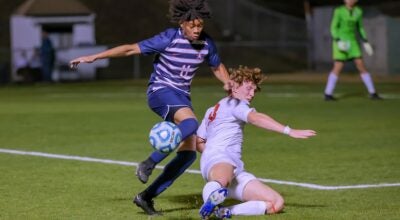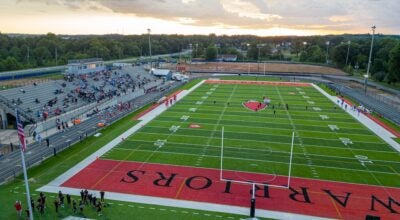THS engineering students unveil aquatic wheelchair prototypes
Published 2:36 pm Friday, May 20, 2016
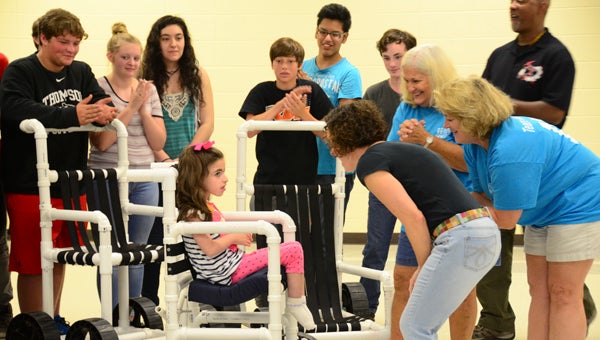
Lily Streets, center, sits in one of the aquatic wheelchair prototypes students in Thompson High School’s Engineering Academy built for special-needs students. (Reporter Photo/Emily Sparacino)
By EMILY SPARACINO / Staff Writer
ALABASTER – Meadow View Elementary School student Lily Streets loves to swim, but getting into and out of the swimming pool with her wheelchair is not easy.
Students in Thompson High School’s Engineering Academy are working on a project to give Streets, 9, and other children with physical limitations easier access to the water activities they enjoy, without a hefty price tag.
On May 20, after months of research and work, students presented prototypes of cost-effective wheelchairs they designed and built to better accommodate children like Streets at the pool and places with uneven terrain, like the beach.
“The students have worked hard,” Engineering Academy instructor Brian Copes said of his and LanJulian Pendleton’s nearly 100 students involved in the project. “We try to teach with a purpose, and teach kids how to use their time and talents to help others in need. This is the start of a project that will be several years to come.”
Six groups of students took turns talking about the features of the wheelchairs they constructed, and demonstrating how they function, for Streets; her mother, Lynn; Alabaster City Schools work instructor Becky Goggins and adaptive P.E. teacher Nan Franks.
Goggins, Franks and Cena Davis first approached Copes in October about the possibility of his students creating an aquatic wheelchair for students with special needs.
“We take the students swimming at the YMCA,” Goggins said. “This is a fantastic time for students because they get to be free.”
The only problem is moving Streets and other students into and out of their regular wheelchairs can be cumbersome and dangerous, depending on their physical conditions.
But the price range of a multipurpose wheelchair in the marketplace is anywhere from $1,200 to $2,000.
“We couldn’t afford it,” Goggins said. “You don’t know how much we appreciate this. Y’all have truly touched us, and you will touch the lives of students who do face difficulties.”
Although the students’ wheelchairs shared some similar characteristics, each had special features that students incorporated based on their research.
The chairs varied in size and height. Special features included removable seat cushions, retractable footrests, brake systems, all-terrain wheels and flotation capabilities.
One wheelchair was collapsible.
“I don’t know how we’re going to pick just one,” Goggins said of the prototypes. “From the bottom of our hearts, we really appreciate the effort.”
Lily’s mother expressed her gratitude to the students for devoting their time to helping children with specific needs.
“Thank you for thinking of children who are disabled,” Lynn Streets said. “It could have been any one of us in a wheelchair. Thank you for thinking of others.”
Lily had the opportunity to test each of the wheelchair prototypes, and seemed to approve of the students’ efforts.
“She likes it, she’s smiling,” Lynn said. “It’s just awesome to see young people think about people who need help.”
Alabaster City Schools Superintendent Dr. Wayne Vickers also commended the students for their work in the Engineering Academy.
“You’re solving real-world problems using engineering concepts,” Vickers said. “I want to thank you all for taking this challenge on. This is what it’s all about, and I am a very proud Warrior.”


